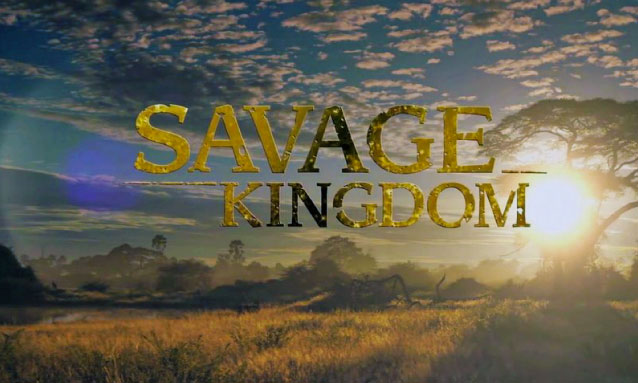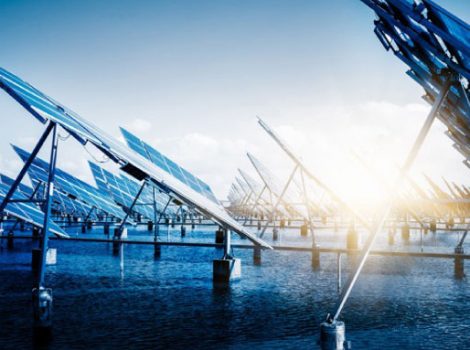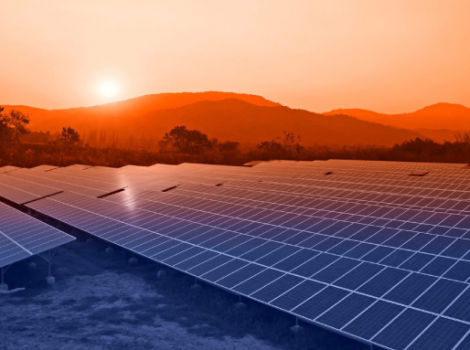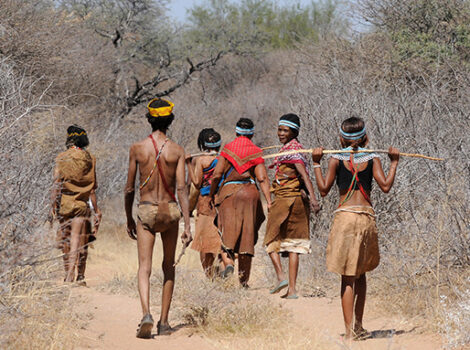
Fans of the Nat Geo TV series Savage Kingdom are in for a treat, as Season 4 of the real-life wildlife drama set in northern Botswana unspooled on Friday, August 14. As it happens, Botswana is also the setting for a to-the-death struggle between coal power and renewable energy. CleanTechnica had a chance to speak with Savage Kingdom Director of Photography, Alex Cooke early last week, and he dropped some interesting observations about the solar power trend in the sun-soaked country.
Getting to where the action is
Savage Kingdom has an especially powerful you-are-there feel to it, and that’s no accident. Cooke explained that the biggest challenge in filming the series is finding the animals to film. After all, it’s not like you can call over to the trailer and have the actor pop out, all dressed up and ready to go. So, you have to go to them.
“Hands down the biggest challenge is finding the animals to film them,” Cooke explained. “We live out in the bush so we sleep near where we left the animals the night before, in hopes that we hear them. If we hear them in the evening it helps with tracking in the morning.”
“Sometimes you wake up in the morning and there’s a lion sleeping 100 feet from the car. Other days you spend weeks looking for the animals, especially when they have young cubs,” he added.
“Everyone wants to see the young ones but that is hands down the hardest thing to find. [The adult] behaviour shifts when they have cubs. So then, you have to look for tracks and hope you find them after they’ve eaten and they’re going back to [their cubs].”
All of this suggests that perhaps a nice, quiet electric vehicle would be helpful. As Cooke described it, Savage Kingdom has been casting about for EVs but hasn’t found a good substitute for its diesel-powered gas mobiles — yet. Meanwhile, Cooke estimates that their vehicles are turned off about 90% of the time they’re on location, to cut down on noise. All of the other equipment is powered by electricity from a lithium-ion battery, which they have on occasion recharged with solar power when stopping by one of the solar-powered safari lodges that dot the area.
And therein lies one key to the renewable energy trend in Botswana.
Renewable energy filling the cracks in outdated coal grid
Botswana took a giant step into coal just a few years ago, and the nation has been struggling to disentangle itself ever since, so renewable energy has a long way to go. However, the failure of coal to provide for growing electricity demand in Botswana already has individuals and businesses taking matters into their own hands.
Writing for CleanTechnica last fall, David Zarembka took note when two Japanese banks withdrew their support for two new coal power plants.
“All of the 735 MW of nominal capacity in Botswana is coal-generated, but sometimes the electricity generated is only 25% of its rated capacity,” Zarembka wrote.
“This is due to poor construction, lack of maintenance, and corruption from the Chinese company that built the first four 150 MW plants.”
Botswana has tried to make up the deficit by importing electricity from neighbouring South Africa, but South Africa is also experiencing a coal-fueled power crunch. Cooke noted that individual farmers and safari lodges have already taken matters into their own hands.
“In northern Botswana, a lot of people lead a subsistence lifestyle. They are not necessarily environmentally-focused [on energy] consumption, but a lot of the farmers do use solar because they don’t have access to the power grid,” he said.
“Most of the lodges in the delta rely heavily on solar power because there is no grid.”
Onwards & upwards for renewable energy
If all goes according to plan, the coming years will look a lot different. In a 2016 research paper, US professor Michael Mooiman of Franklin Pierce University noted;
“Botswana, with its high solar irradiance levels and vast expanses of thinly populated and available land, has enormous potential for solar power generation.”
It looks like the country’s grid managers are finally catching on. In May of 2019, Reuters reported that the state-owned Botswana Power Corporation (BPC) cancelled joint venture plans for a 100 MW solar power plant. That’s the bad news. The good news is that BPC withdrew the tender in order to reissue it as a 100% privately owned project, consisting of two 50-megawatt solar plants.
(Renewable) energy independence for Botswana
That still leaves the problem of transmission to solve, but baby steps. As of this summer, the renewable energy project is moving forward. On June 3, Afrik21 reported that BPC will be ready to announce developers for the new solar power plants next month. If all goes according to plan, the agreement will be inked in November, construction will begin next summer, and 100 megawatts of renewable energy will be added to the BPC grid sometime in 2022.
“This prospect could allow Botswana to reduce its electricity imports from South Africa,” noted Afrik21 reporter Jean Marie Takouleu.
“The situation within the rainbow nation is no longer very favourable due to the crisis at the state-owned company Eskom.”
Not that there’s anything wrong with importing electricity. After all, the US imports various forms of energy all the time, including substantial imports of electricity from Canada and a small but growing amount of electricity from Mexico. However, when your import partner — namely, Eskom — is struggling to fulfil its commitments, it’s time to move on. Last year, the Institute for Energy Economics and Financial Analysis had this to say about the situation at Eskom:
“Cost and schedule blow-outs at two unfinished coal-fired power plants have left Eskom unable to generate enough cash to service its US$31bn debt.
“Although international power sales made up only 6% of Eskom’s total sales for the 2018-19 financial year, its cross-border customers have far smaller power systems than South Africa and are often reliant on such imports.”
Botswana, for one, appears ready to move on in a big way. Following last year’s restart of the BPC tender for 100 megawatts in renewable energy, word dropped that BPC is considering a joint, phased-in project for 5 gigawatts in new solar power capacity over the next 20 years — yes, that would be gigawatts — with neighbouring Namibia.
“The first stage would eliminate the need for power exports from Eskom with later stages converting both countries from electricity importers to exporters,” observed IEEFA.
The World Economic Forum is behind the “mega-solar project,” along with a powerhouse list of partners including World Bank Group, International Finance Corporation, African Development Bank and Africa Renewable Energy Initiative among others. From a cost and technology standpoint, Namibia and Botswana can certainly take advantage of the timing. Costs for both solar power and energy storage are still dropping precipitously, and the prospect of solar-powered green hydrogen would provide the two partners with additional energy export opportunities. If those 5 gigawatts do come about, that could end up being a drop in the bucket. The US-sponsored Power Africa initiative is another World Economic Forum partner, and they are eyeballing 30,000 megawatts in renewable energy on a continent-wide basis.
Article by Tina Casey



